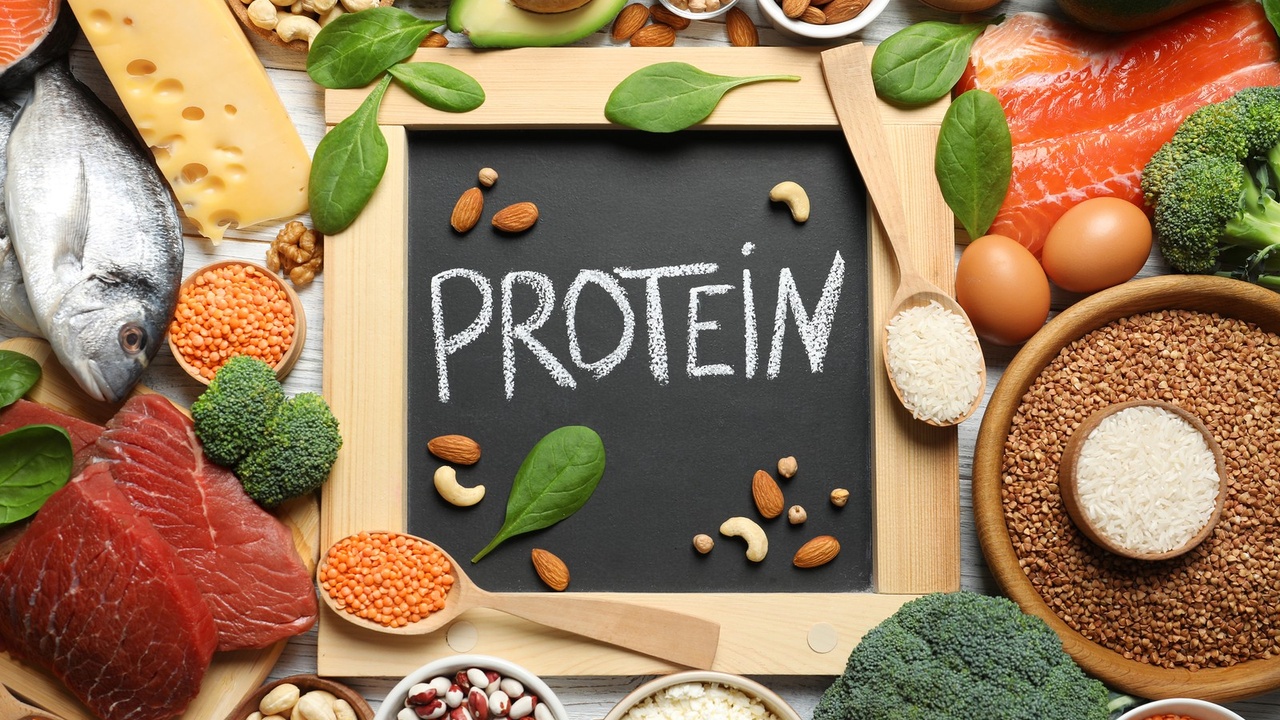Menopause Menu: Protein and Menopause
Aug 13, 2022
Do I need it? Why? How Much? What Kind?
I’ve been a fitness pro for 20 years now, and the topic of adequate protein consumption or the lack thereof has always been a constant; and will continue to be. Not only is protein a key element in building muscle, but protein is also important in the proper functioning of your body (major structural component of our muscles, nervous system, brain, blood, skin, and hair and is used by the body as a transport mechanism for vitamins, minerals, oxygen, and fats). Specific menopause-related factors, such as decreased estrogens, and age-related factors, such as decreased testosterone, can lead to accelerated muscle and bone loss. Due to its role in the muscle-building process, emphasizing adequate protein consumption in combination with resistance during the menopausal transition becomes extremely important. Recent research has shown that low protein intake is associated with an increase in muscle loss (sarcopenia), and considering that the menopausal transition is already associated with accelerated muscle loss, slowing this progression becomes incredibly important.
Daily protein intake recommendations
Research has indicated that protein absorption is most efficient when consumed uniformly throughout the day, meaning consuming some protein with every meal. There has been much discussion about what the right about of protein is, and, generally speaking, recommendations have varied based on activity level. General recommendations from the American Dietetic Association and the American College of Sports Medicine say that the average adult needs roughly 0.8 g of protein per kilogram. One kilogram equals 2.2 pounds, so if weigh 150 lbs, you would need 55g of protein (150/2.2 x 0.8). Research shows that to emphasize muscle growth, the overall daily protein intake should be in the range of 1.4–2.0 g protein/kg body weight/day. However, because menopause comes with additional challenges, Dr. Stacy Sims recommends that peri- and postmenopausal women should aim to stay at the higher end of the recommended range (2.2 - 2.4g per kg of bodyweight).
Protein basics
All proteins are made up of amino acids. Most of these amino acids can be produced by the body, but nine essential amino acids must be obtained by food.
Complete proteins are proteins (animal sources such as milk, eggs, poultry, fish, and meat) that contain all 9 essential amino acids.
Incomplete proteins are protein sources that do not contain all essential amino acids. This is especially important for vegetarians and vegans as they need to pay special attention to eating a variety of plant foods to ensure they consume enough of all amino acids.
- Topping the list of high-quality proteins are meat, egg, poultry, and fish. Milk and its components (whey, casein, soy) are close behind.
- Whey protein can be divided into whey powder (11%-15% protein), whey concentrate (25%-89% protein), and whey isolate (>90% protein). Whey isolate is lactose-free. This type of protein is quickly absorbed and digested and is ideal for muscle regeneration after a workout. It has a much larger muscle protein synthesis stimulation ability than casein or soy proteins.
- Casein is released into the bloodstream much slower than whey and can provide a more constant supply of amino acids. A combination of whey and casein seems to have the greatest muscular strength improvements.
- Soy is the only vegetable protein that contains all nine essential amino acids. Just like whey protein, soy can be divided into three types (soy flour, concentrate, and isolate) depending on the protein content. This type of protein has been in the news for its health benefits. FDA determined that diets with four daily soy servings can reduce levels of LDL by as much as 10 percent (1% drop in total cholesterol can equal a 2 percent drop in heart disease risk). Adding soy to milk can enhance the effect of resistance training in postmenopausal women.
So what does this all mean?
The most important aspect of protein consumption is to ensure the consumption of the nine essential amino acids during the day. It is not necessary to consume complete proteins at all meals. This can be accomplished through complete proteins or a combination of incomplete proteins. When choosing a protein powder, pay attention to the type of protein (isolate is better than powder or concentrate). Also, pay attention to how your body reacts to different protein powders. Some of them can cause intestinal discomfort. When trying to meet
The key message is that prioritizing protein consumption is a must during menopause! You can do it!
Note: This article provides information but should not be taken as medical advice. Contact your health care provider if you have other health conditions and are interested in exploring changes to your diet. There may be interactions with medications or pre-existing conditions that were not explored in this article.



